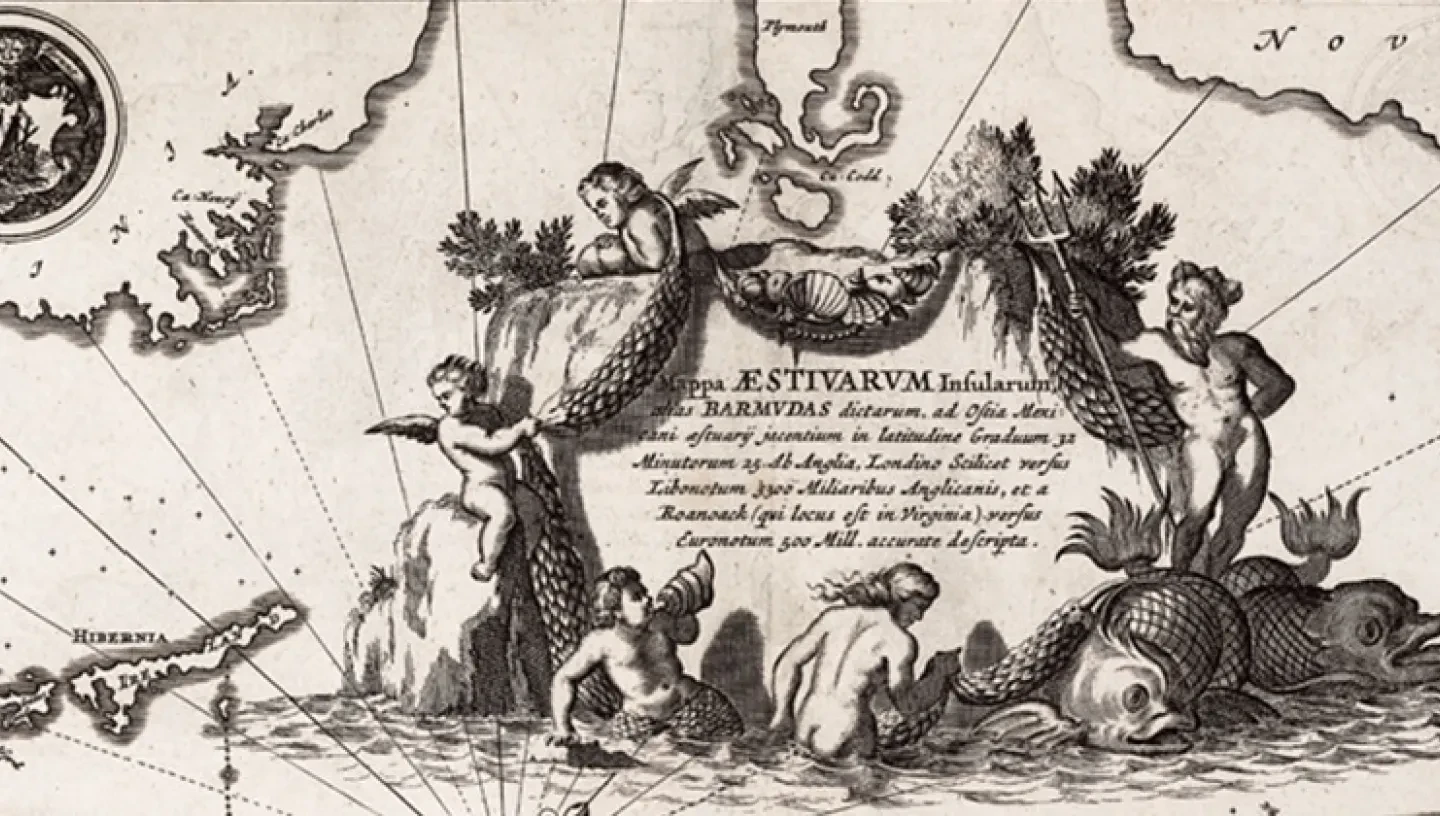
Lured by the promise of pink sandy beaches and turquoise-blue seas, millions of tourists visit Bermuda every year. Collaborative Doctoral Student Anna McKay examines the difficulties faced by officials in acquiring labourers to work on the site during the nineteenth century.
By Anna McKay, Collaborative Doctoral Student at the NMM and the University of Leicester.
Visit the Caird Library and Archive
At just twenty-one miles long, Bermuda is an island situated in the North Atlantic ocean, more than 600 miles from North America and over 3,000 miles from Great Britain. It was only after the American Revolution in 1775 that Bermuda became a key base for the Royal Navy. With the loss of the eastern seaboard of the United States, bases in Canada and the Caribbean found new strategic importance. Halfway between these points came Bermuda, and it became an important part of Britain’s imperial defence system.
The adequate supply of labour was one of the greatest threats to Bermuda’s imperial development. Within its collections, the National Maritime Museum holds an essay entitled “On the several methods of providing artificers and labourers for the works connected with the dockyard on Ireland Island” (LAD/29). Written by an official around 1863, this essay provides an overview of the required works at Ireland Island, the site of the Royal Naval Dockyard. This document gives us an insight into the difficulties faced in acquiring labourers to work on the site.
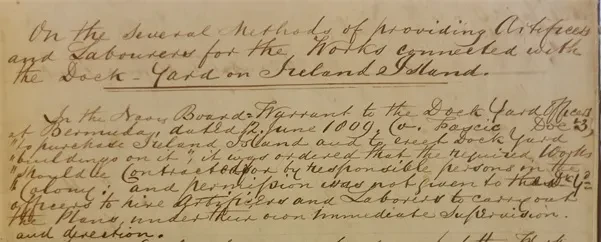
The document states that in 1809 the required works were ordered to be carried out:
“by responsible persons in the colony; and permission was not given to the Dk Yd [Dockyard] officers to hire artificers and labourers to carry out the plans under their own immediate supervision and direction”
Under this system of hiring contracted labourers, building work progressed slowly and unsatisfactorily. Even with the high rate of wages offered, free labour migration could not meet demand. By 1814, officials wrote home asking for artificers to shipwrights to be sent from England, and ten carpenters based at Portsmouth Dockyard were soon despatched to Bermuda. After three years, they were given the choice to return home, or remain in Bermuda with an increase of pay and a promotion.
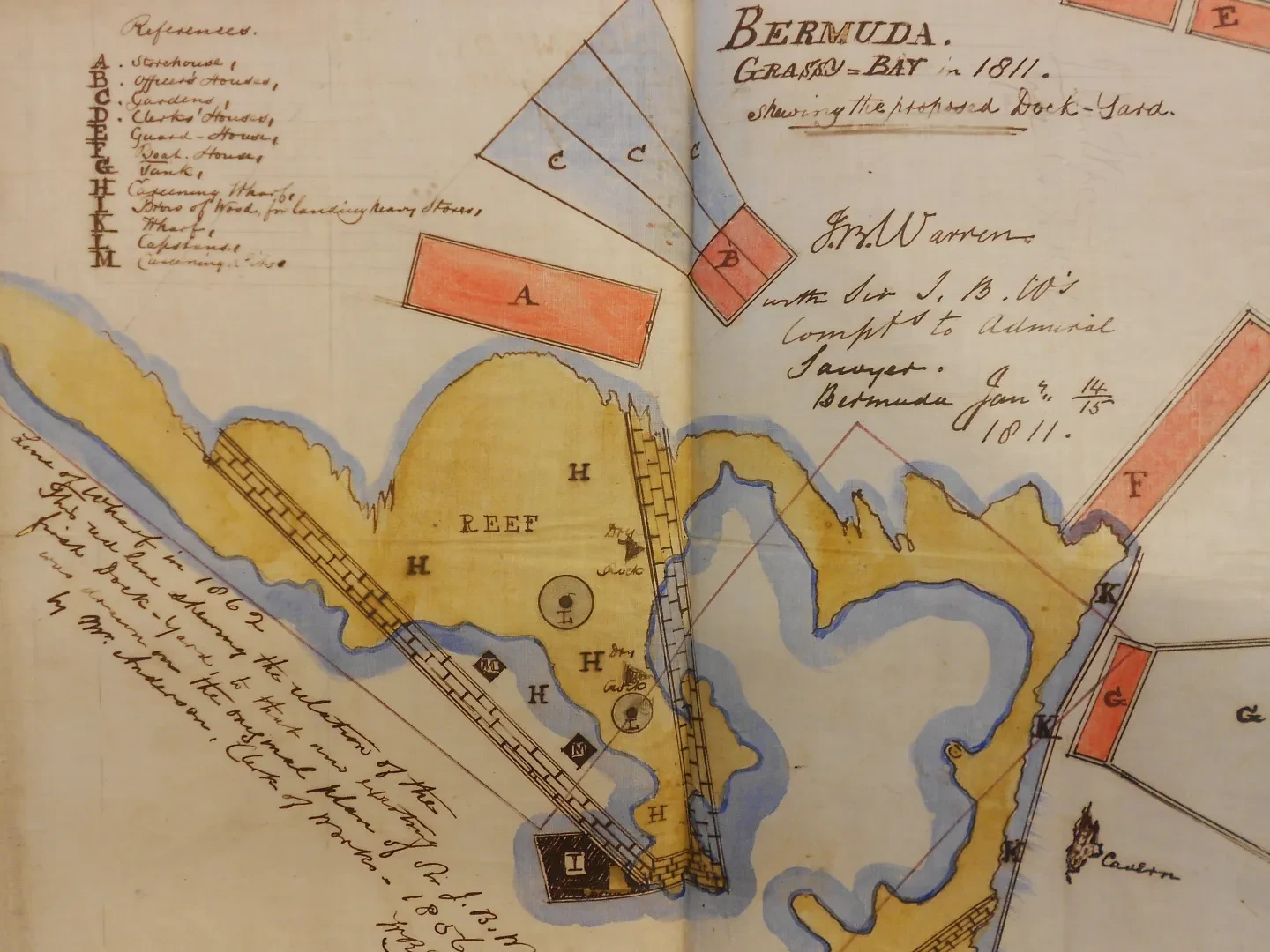
By 1813, the Superintendent of New Works, Commodore A.J. Evans, was given instructions to procure as many artificers as possible to work on the site, including black labourers. Enslaved black men from Bermuda appeared in the Dockyard account books from 1810. These men were hired by the Government from the colonists who owned them and received their wages, around £2 Sterling a month. These men were lodged in the yards or on board receiving ships. As locals, they provided expert knowledge and experience but did not have any choice in the matter, nor did they receive wages of their own.
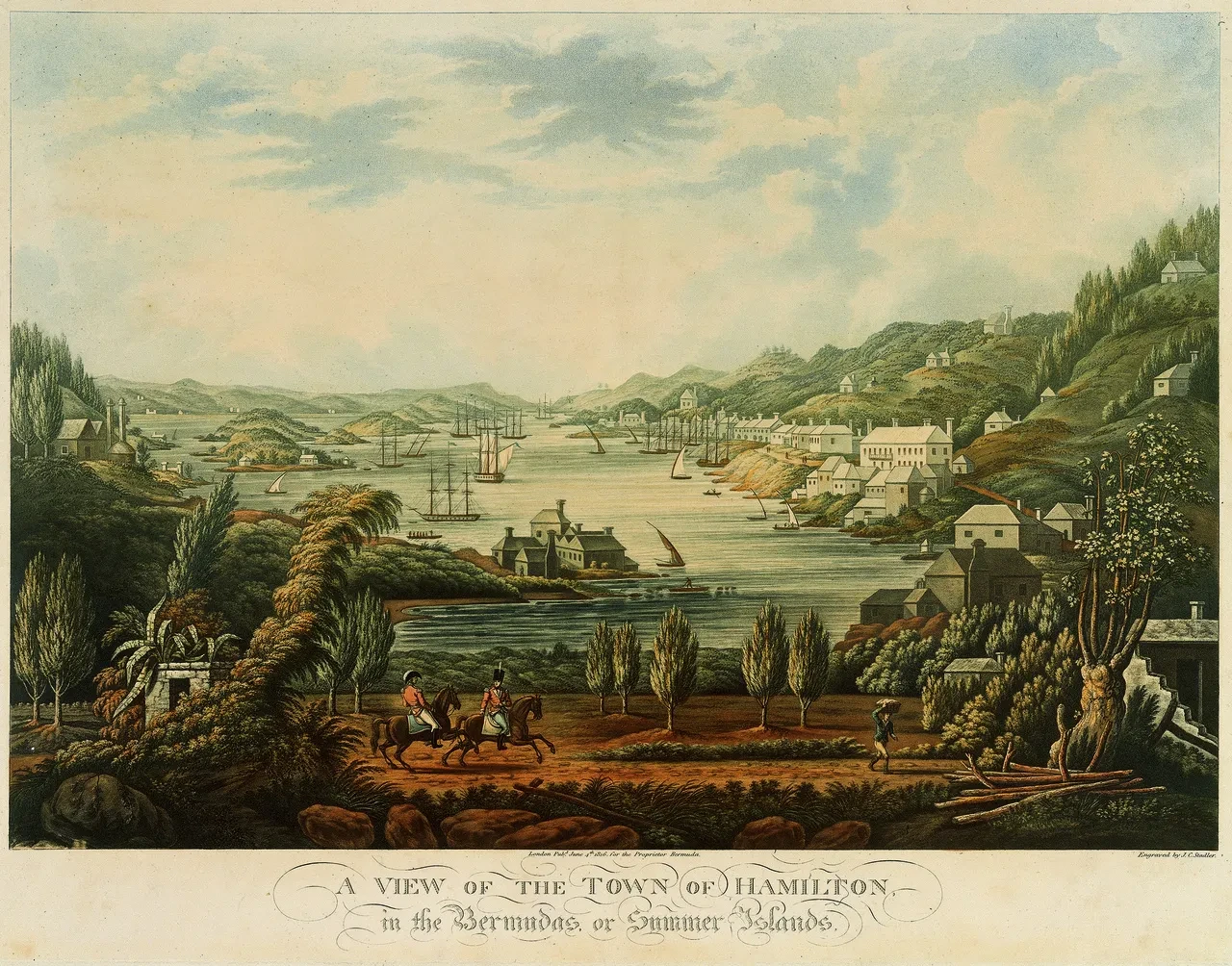
During wartime, French and American prisoners of war detained at Bermuda could be employed as labourers. They were brought in on prize ships, captured at sea. Some volunteered to work and earned half a dollar a day in wages. Prisoners of war fitted up prison and hospital ships, the Naval Hospital and the residences of Dockyard Officers. In addition, during the War of 1812, many enslaved refugees came to Bermuda from America. The document states that the refugees “always arrived in a state of the utmost destitution and misery, often helpless from dysentery: but they were no longer slaves”. Refugees were put to work; the majority of men worked as labourers but some were enlisted in the 3rd Battalion of the Royal Marines on garrison duty in the Dockyard. Formerly enslaved women and children carried out smaller tasks, such as picking oakum. When the slave trade was abolished in 1834, many black workers were kept on as free labourers.
Emancipation came at a time when Bermuda was still hungry for labour. The construction of the Dockyard was greatly enhanced in 1823 by the arrival of convicts. Housed on several prison hulks moored off the Dockyard, they were put to work on various tasks until 1863. It was noted that:
“the Convict Establishment was the greatest moving power by the manual efforts of which the Dock Yard as we behold it, with its breakwater to protect it from the violence of storms, and the lofty fortifications for its defence in war, have been constructed”.
Two convict hulks were also moored at the eastern end of St. George’s, the former capital, now a UNESCO World Heritage site. If they behaved well, convicts could be pardoned or take a ‘ticket-of-leave’ in the Australian colonies. They were not allowed to settle on the island as residents objected to this.
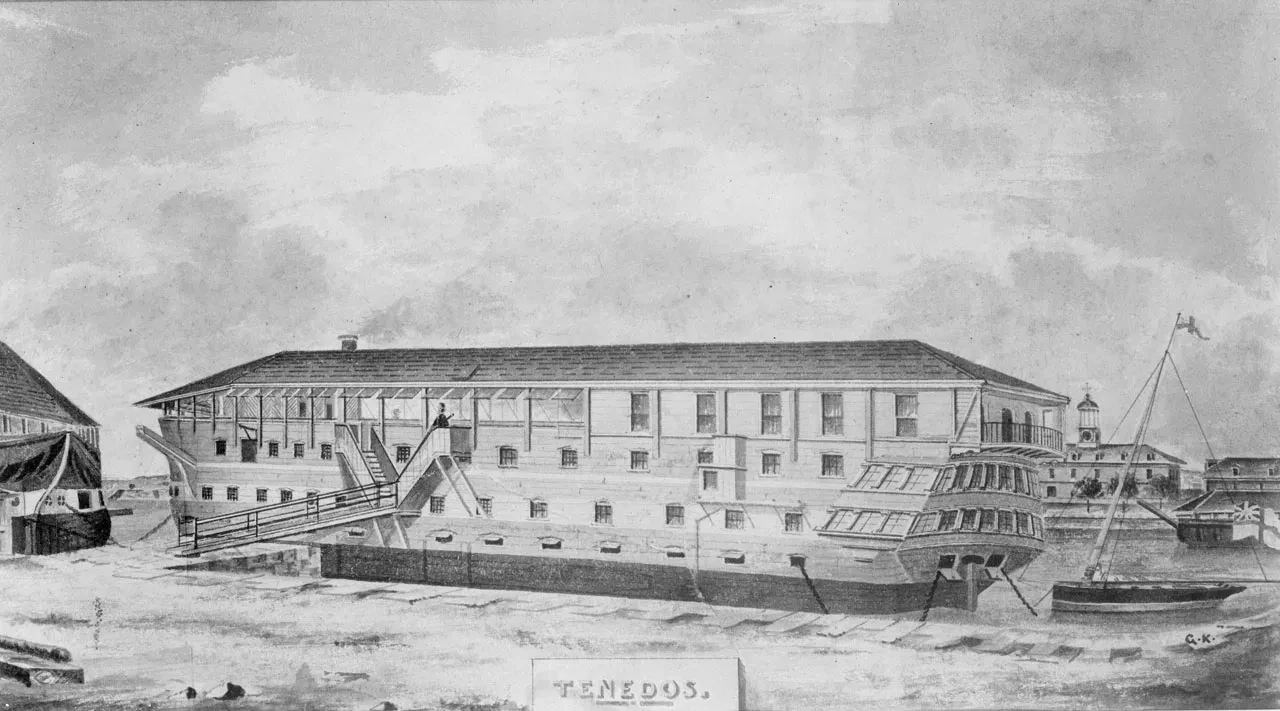
Working conditions in Bermuda were harsh. In the sub-tropical climate, the heat of the sun was strong. Quarrying limestone was particularly back-breaking work. Many men suffered from acute ophthalmia, as their eyesight was damaged by light reflected off the white stone they worked on. Separated from their families, drunkenness became a problem amongst all men who worked in the Dockyard. It was stated that rum could be “obtained disproportionately cheap in comparison with the necessaries and salutary luxuries of life”. Those intoxicated in the Dockyard could have their wages docked, or even risk dismissal. Even convicts could obtain spirits through intermediaries. Men suffering from alcohol withdrawal or dependency were sent to the hospital, while convicts were sent to the Tenedos hospital ship. Overseers noted that men who drank too much became careless and disrespectful. Their bodies became weak, and susceptible to disease. Epidemics of yellow fever frequently wiped out scores of convicts and military personnel. In this climate, outbreaks of unrest and insubordination were frequent.
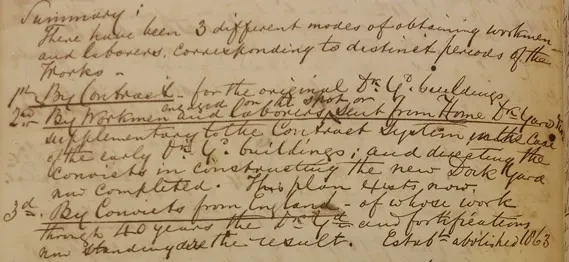
The document LAD/29 shows us that the Dockyard at Bermuda was a mixed site of individuals. Desperate for labour, officials used manpower from a range of sources; these included contacted labourers and prisoners of war, formerly enslaved refugees, military servicemen and convicts. Bermuda’s continuous development as a military and naval base after the American Revolution led to it becoming known informally as the ‘Gibraltar of the West’. Now a popular tourist destination, over half a million visitors each year are lured by the promise of pink sandy beaches and turquoise-blue seas. Cruise ships and private yachts jostle for position in the Great Sound where prison hulks were once moored, next to the bustling Dockyard complex built by the hands of free and unfree labourers.
To find this essay in the archive catalogue search finding reference LAD/29